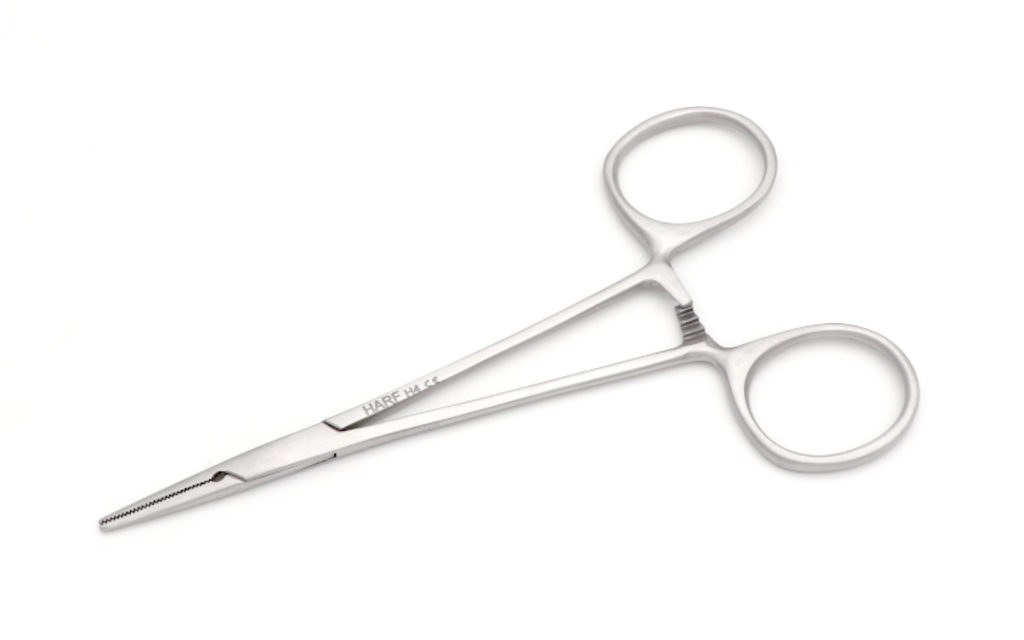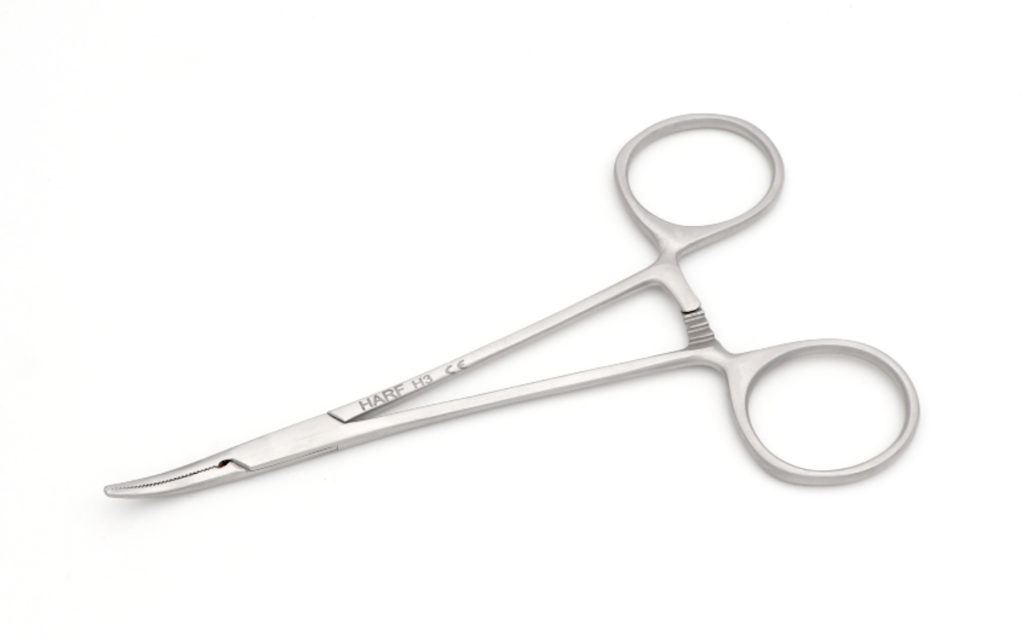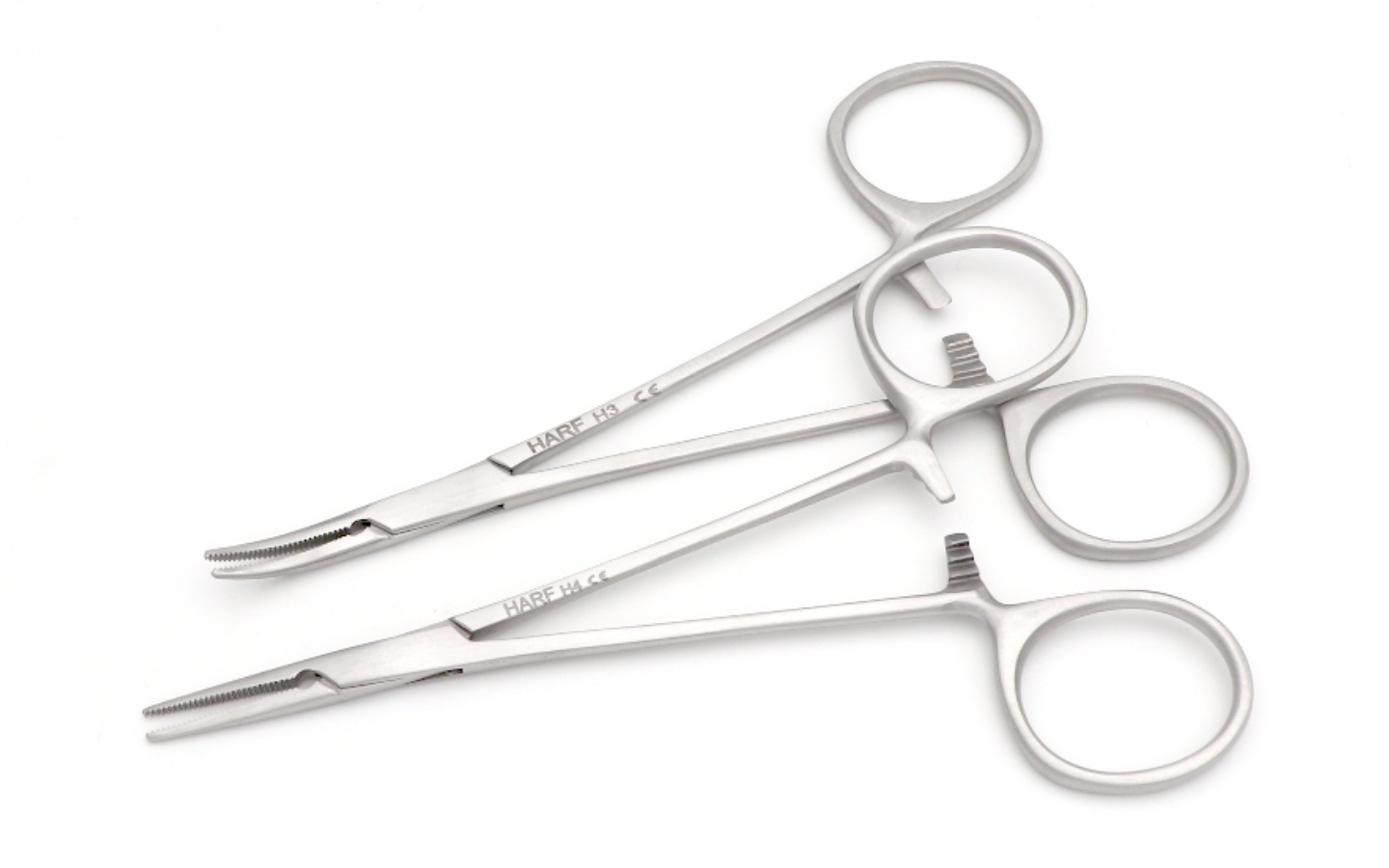Halsted-Mosquito Hemostats are multipurpose forceps used to clamp off blood vessels, remove small root tips and grasp loose objects. Hemostatic Forceps also known as artery forceps are hinged and look like ring scissors. These Forceps have locking mechanism called a ratchet, which is used for clamping. The jaws of the locking forceps gradually come together as each increment of the ratchet is applied.
Hemostatic Forceps are available in various sizes and jaws/tips. The jaws can be straight, curved or angled. The gipping tips cab be smooth, serrated, with or without tungsten carbide inserts. Two most commonly used Halsted-Mosquito Hemostats are straight and curved designs.
Hemostat Halsted-Mosquito, Straight

Hemostat Halsted-Mosquito, Curved

Technical Specifications of Halsted-Mosquito Hemostats:
- Total length of instrument is 12cm
- Serrated jaws
- H4 Straight & H3 Curved designs
- Durable high grade surgical stainless-steel material is used
- Completely sterilizable
- Satin Steel Finishing
- Left-Hand or Right-Hand usage
- Boil Tested, Performance Tested, Shape Tested
Maintenance and Reprocessing of Hemostats:
Please find here the key instructions and explanations to avoid damage caused by most common errors in the re-processing / hygiene chain errors.
Instruments Break on Tips/Joints:
All instruments need to be treated carefully. Do not throw them down or let them fall. Drops and mechanical stress due to impacts with other instruments may lead to cracks. Particularly carbide inserts are very brittle and are very vulnerable for breaks by falls. Please be sure you are using the right needle / thread size (type), which is recommended by the company for each kind of forcep. All joint instruments need to be cleaned and sterilized in open position. This is particularly important for forceps or needle holders. When closed, the instrument tips are under contact pressure. Due to heating in the WD and during sterilization, the steel expands and the contact pressure on the instrument tip increases. This cannot occur in open position. With forceps a preparation in closed position can lead to stress cracking. In the beginning these cracks can absolutely be in the small region, so that the final instruments break arises later, e.g. under stress. Chlorides in varying concentrations in each drinking and mains water cannot be eliminated completely by a demineralization process of drinking water. While drying, chlorides focus punctually on the surface and cause pitting corrosion. To avoid this, the final rinse should be made with deionized water. These small corrosion holes, especially at the tips, inevitably lead.
Corrosion on Joints:
If you ask about the meaning of terms such as stainless steel, it is often assumed that stainless steel is an indestructible, extremely durable material. The corrosion resistance of “STAINLESS STEEL” is based on the fact that they form passive layers on their surface, protecting the steel. Due to external influences, these protective passive layers can be destroyed, and this will lead to defects on the instruments. (see sterilization guide for more details or contact us directly).

